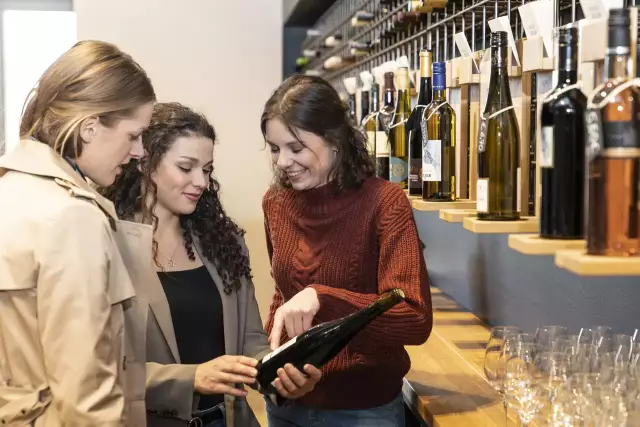German Consumers Think Economically When Buying Wine
The currently challenging economic conditions are also affecting the German wine market.

As reported by the German Wine Institute (DWI) on the basis of a wine market analysis, which was carried out by NielsenIQ on behalf of the DWI, ten percent less wine was bought in Germany last year, which led to a 6.5 percent drop in sales.
“Due to the loss of purchasing power caused by the rise in the cost of living, household purchases have focused strongly on essential products. As a result, fewer households bought wine and paid more attention to the price,” explains DWI managing director Monika Reule on the development of the wine market in 2022.
Less market share at higher prices
Above all, the cheaper wines from abroad have benefited from the greater price sensitivity of consumers. With an average price of €3.64/l for international wines, their purchase volumes fell by seven percent and spending by five percent, while domestic suppliers had to accept a drop in volume of 14 percent and a drop in sales of 8 percent at an average price of €4.18/l .
As a result, the market share of German wines in the wine purchasing volume fell by one percentage point to 44 percent. In terms of foreign origins, Italian wines show the highest volume market share with 16 percent (-1 percentage point), followed by wines from Spain with 14 percent (+2 percentage points) and French wines with unchanged eleven percent.
Domestic wines accounted for an unchanged 47 percent share of wine spending, reflecting the higher average price.
Organic wine has loyal customers
Organic wines were exempt from the decline in consumption last year. They were able to maintain their market shares of three percent in wine sales and four percent in sales compared to the previous year.
Rosé wines increasingly popular
Contrary to the general wine purchasing trend, sales of rosé wines developed positively in 2022. They improved their share of the wine purchasing volume by one percentage point to 13 percent. This growth came at the expense of red wine consumption, whose market share fell from 41 to 40 percent. White wines remained unchanged with a volume market share of 47 percent.
Online wine trade is growing
After the growth in online wine purchases, especially during the pandemic-related lockdown, the market share of online wines increased again by two percentage points to 13 percent in 2022. The food retail trade (LEH), on the other hand, has lost two percentage points among wine shops, but remains by far the most important source of wine for consumers. 64 percent of all wines were bought in food retail in 2022. The discounters have an unchanged market share of 37 percent. Direct sales from producers are still important for German wines. Twenty-two percent of them were purchased in local businesses or in their online shops.
Contact persons
-
Ernst Büscher
Press officer


